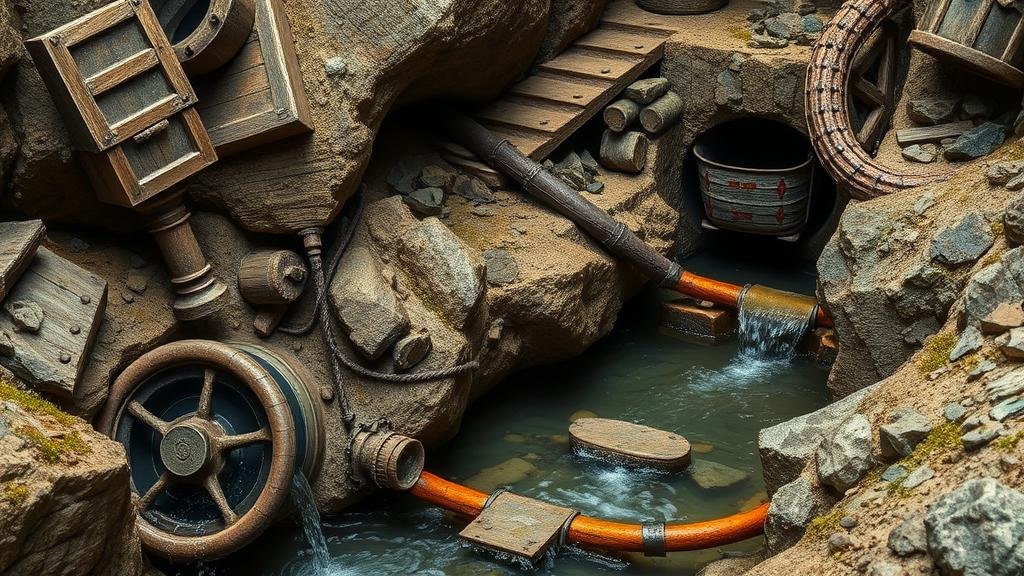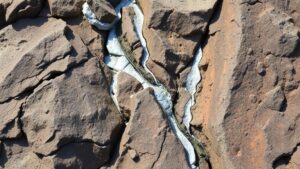Using Water Flow Control Systems in Agricola’s Medieval Mining Operations
Using Water Flow Control Systems in Agricola’s Medieval Mining Operations
The management of water is crucial in mining operations, particularly in the context of medieval mining as documented in Georgius Agricolas seminal work, De re metallica. This text not only outlines various mining techniques but also highlights the importance of water flow control systems to enhance efficiency and safety. This article explores the role and implementation of these systems in Agricolas time, detailing their design, function, and overall impact on mining operations.
The Importance of Water in Mining
Water serves multiple purposes in mining operations. It is essential for:
- Dust Suppression: Reducing dust improves air quality and protects workers.
- Ore Transport: Water is often used to move ore more quickly and efficiently.
- Cooling and Lubrication: Water helps to cool machinery and lubricate tools.
- Waste Management: Proper water management helps in the effective disposal of mining waste.
But, excessive water can pose serious challenges, such as flooding and erosion of tunnels. Effective water control systems mitigate these risks, allowing for a smoother operation.
Types of Water Flow Control Systems
In Agricolas time, miners used several sophisticated systems to control water flow:
- Draining Systems: These systems included ditches and trenches designed to divert surface water away from mines.
- Water Wheels: Used for pumping water out of mines, water wheels harnessed kinetic energy to move water effectively.
- Archimedes Screw: This device, present in some operations, helped elevate water from lower to higher areas, crucial for both drainage and ore processing.
Case Studies: Application in Mining Operations
Agricola provides various examples of how these systems were practically applied in mining scenarios:
- The Silver Mines of Joachimsthal: In these operations, a network of ditches effectively drained water from the mines, allowing for year-round operations even in wet conditions.
- Mining in the Harz Mountains: Here, water wheels not only drained mines but also powered machinery for crushing ore, significantly increasing productivity.
Benefits of Water Flow Control Systems
The implementation of these systems led to multiple benefits in Agricola’s mining operations:
- Increased Safety: Effective drainage reduced the risk of flooding, ensuring that miners could operate more safely.
- Improved Efficiency: By managing water flow, mines could maintain optimal working conditions year-round, resulting in higher yield rates.
- Cost Savings: The reduction in equipment damage due to flooding and erosion led to significant cost savings.
Modern Equivalents: Lessons from Agricola’s Systems
Todays mining operations still mirror Agricola’s principles regarding water management. Modern engineering employs advanced technologies such as:
- Automated Pumping Systems: These frameworks adjust in real-time to water levels within mines.
- GIS and Remote Sensing: Technologies that facilitate effective mapping and monitoring of water flow systems.
The emphasis on sustainable resource management and water conservation gleaned from Agricolas methods remains paramount in todays environmental-conscious mining practices.
Conclusion: Key Takeaways
Through his meticulous documentation, Georgius Agricola laid the groundwork for modern mining techniques, particularly in the context of water flow management. The successful application of these systems not only demonstrates innovation but also highlights the interdependence of mining and water resource management. For contemporary mining operations, the lessons derived from Agricola’s work serve as a reminder of the timeless importance of effective water control systems.
In summary, understanding and improving water flow management is essential for achieving safety and efficiency in both historical and modern mining practices.



